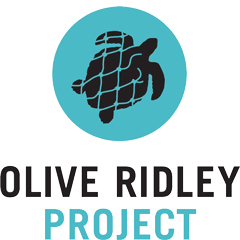To create effective conservation strategies for sea turtles, we need to fill the gaps in scientific knowledge; we need reliable information to study the population structures, distribution, habitat use, and migration pattern of all sea turtle species, as well as the threats they face and where they face them.
The importance of research in sea turtle conservation
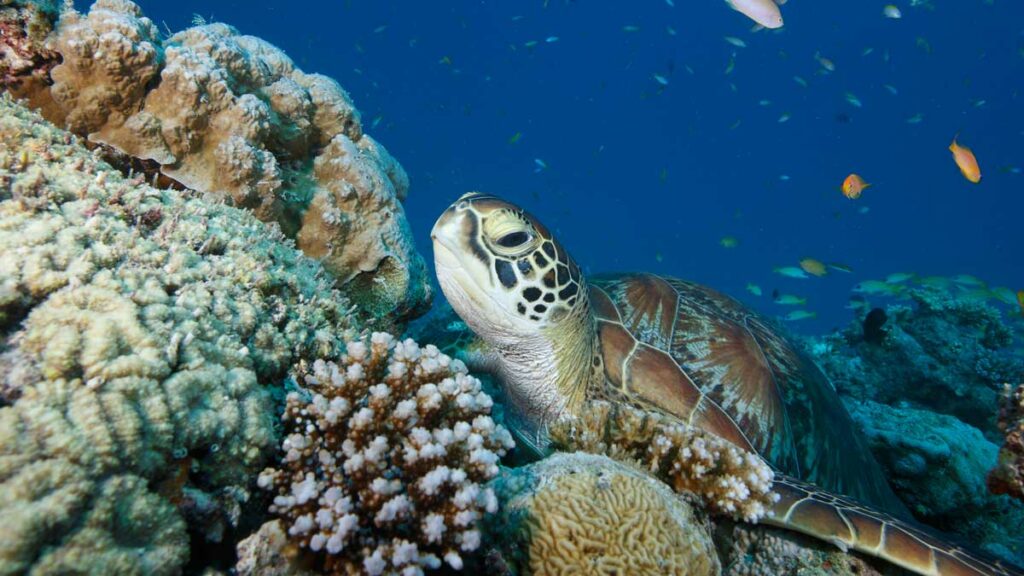
Before we can begin to protect sea turtles and their habitats, we need to answer the question: How healthy is the population? To answer that, we first need to know what is out there; we must establish the population baseline in the area of interest. We can do this by exploring, for example, the following questions:
- How many turtles are there?
- Where are the turtles – where do they forage, nest and rest?
- Where do they migrate to and from?
- How long do sea turtles live?
- How fast do sea turtles mature?
- How many eggs do they lay?
- Where do they lay their eggs?
- How many eggs hatch successfully?
- …and many more…
Once we have established the population baseline in an area, we can then understand if the population is declining, increasing or staying the same over time. We can also assess whether or not foraging and nesting sites are shifting in relation to natural and anthropogenic stressors and keep track of how sea turtles are becoming injured and stranded which may highlight new threats in the area.
Finally, information concerning the ecology of sea turtles and documented human impacts has to be combined to develop appropriate management approaches and solutions. Management solutions should be practical and work together with the socioeconomic reality in the specific region.
Sea turtles – elusive study objects
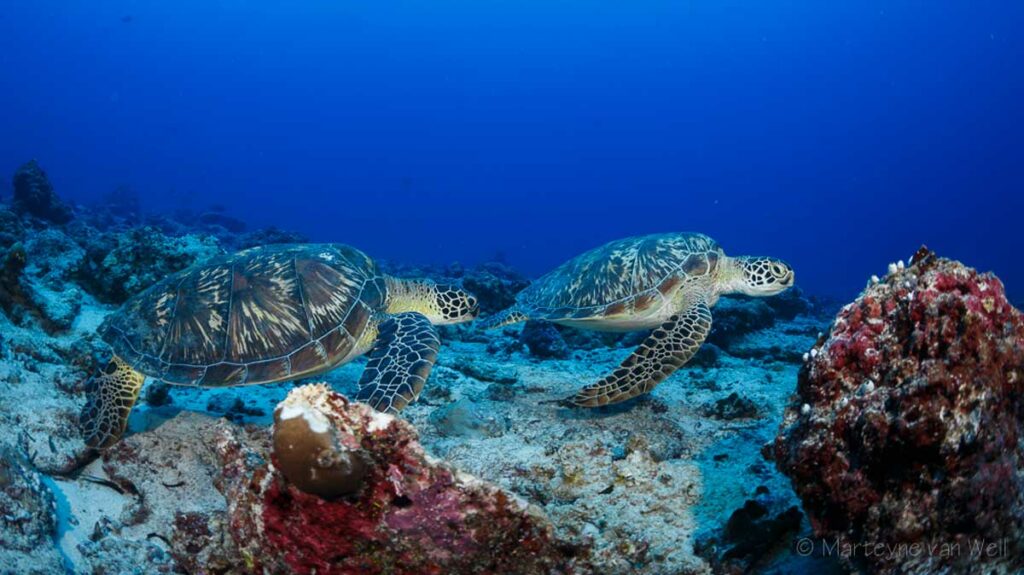
Despite the fact that sea turtles spend the majority of their lives at sea, most sea turtle research and conservation efforts happen on nesting beaches because they are more easily accessible than the open ocean. While nesting beaches are extremely important to the survival of sea turtles, what turtles do in the water, where they go, and the threats they face in the ocean, are still largely unknown.
In order to overcome the many logistical challenges and financial restrictions of collecting large amounts of consistent data in remote and understudied areas, ORP has involved citizen scientists in data collection. For example, many areas in the Indian Ocean region are particularly suited for citizen science data collection programs, given the number of tourists that visit the region specifically to dive, snorkel, and view marine wildlife.
Since much of our research depends on citizen science, we would like to thank everyone who submits data to us, whether that be Photo ID submissions, nesting data or reports of ghost gear.
ORP’s areas of research
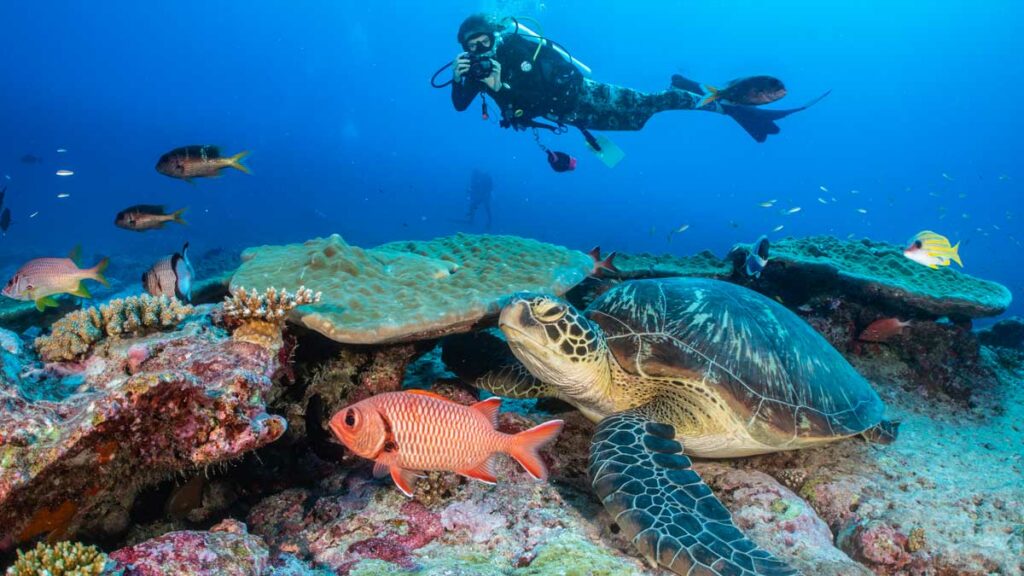
ORP takes advantage of several advanced research techniques to collect data on sea turtle populations. ORP prides itself in pushing the boundaries and pioneering new research techniques to study sea turtle populations, their habitats and the threats they face to their survival. However, we also use simple techniques such as photo-ID, which require only an underwater camera.
Reproductive biology
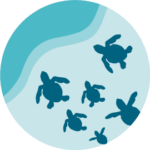
Understanding the environmental variables behind where a female chooses to lay her eggs is important when predicting how sea turtles may or may not adapt to changing environments in the future. Moreover, assessing population scale data (hatching success, fertility rates, rates of predation, hatchling sex ratios) can help to provide a better understanding of the health of a population and subsequently the impact of natural and anthropogenic threats on that population.
Biogeography
Defining population dynamics and establishing clear Management Units (MUs) is important to understand habitat connectivity, key foraging habitats and population structure. Tools typically used to determine MUs are genetic markers, satellite telemetry and mark recapture models. It is hoped that ORP will contribute novel research and collaborate with existing organisations to better understand sea turtle MUs.
Population ecology
Sea turtle life cycles are complex. What further complicates the issue is a lack of knowledge in what constitutes a healthy sea turtle, what their role is in a healthy ecosystem and the average age of an individual within a population and at sexual maturity. More detailed information in these areas will help improve population assessments and pull out key knowledge gaps in the sea turtle life cycle.
Threats to sea turtles
There are a number of anthropogenic threats to sea turtles including but not limited to fishery related bycatch, pollution, fibropapilloma, habitat destruction and climate change. Understanding threats may help us define suitable avoidance measures and coping strategies to safeguard sea turtles into the future.
Applying research to practice
Tackling the ghost gear issue
Ghost gear has been widely recognised as a major source of entanglement for sea turtles around the world, which is why we continue to collect data on ghost gear and sea turtle entanglement events. Through Dr Stelfox’s research, we are now able to make informed decisions about how best to tackle the issue to reduce the amount of ghost gear and minimise its impact on sea turtles.
Dr Stelfox continues to represent ORP at the NGO Tuna Forum and currently sits on three working groups: Bycatch Mitigation, Data and Transparency and Well-Managed FAD Guidance. The aim of this involvement is to ensure ghost gear and ghost fishing are brought into the conversation of global tuna fisheries at the policy level. We hope our experience and expertise will help guide stakeholders to make informed decisions on the issue and ensure it remains firmly on the agenda.
Sea turtle conservation
Established in 1964, the International Union for Conservation of Nature’s Red List of Threatened Species has evolved to become the world’s most comprehensive information source on the global extinction risk status of animal, fungus and plant species.
The first ever National Red List for the Maldives was released by the Ministry of Environment, Climate Change and Technology in April 2022. ORP was recommended by the chair of the working group to become members to assist with the assessment of marine reptiles, which focuses on sea turtles. Dr. Martin Stelfox, ORP Founder & CEO, and Senior Scientist, Dr. Stephanie Köhnk, each led the assessment for specific turtle species: While Dr. Martin Stelfox for olive ridley turtles, and Dr. Stephanie Köhnk for greens and hawksbills.
Information collected by ORP on sea turtle nesting activity, population size and structure, acquired through ORP’s sea turtle photo-ID database, and different threats such as entanglements in marine debris were incorporated into the assessments for Maldives.
For olive ridley turtles, the records of entangled sea turtles, collated over time by ORP, and a study led by Dr. Martin Stelfox on the genetic affiliation of olive ridleys found in the Maldives, served as a significantly important input for the assessment.
As per the assessment, hawksbills were classified as critically endangered and greens as endangered in the Maldives–based on substantial past declines in recorded nesting numbers, and not fully comprehensible and/or eliminated threats to the species survival.
Olive ridley, loggerhead and leatherback have been listed as data deficient since very little data is available for these three species in the Maldives.
“The IUCN Red List is a critical indicator of the health of the world’s biodiversity. Far more than a list of species and their status, it is a powerful tool to inform and catalyze action for biodiversity conservation and policy change, critical to protecting the natural resources we need to surviveThe IUCN Red List is a critical indicator of the health of the world’s biodiversity. Far more than a list of species and their status, it is a powerful tool to inform and catalyze action for biodiversity conservation and policy change, critical to protecting the natural resources we need to survive. It provides information about range, population size, habitat and ecology, use and/or trade, threats, and conservation actions that will help inform necessary conservation decisions.”
IUCN Red List





